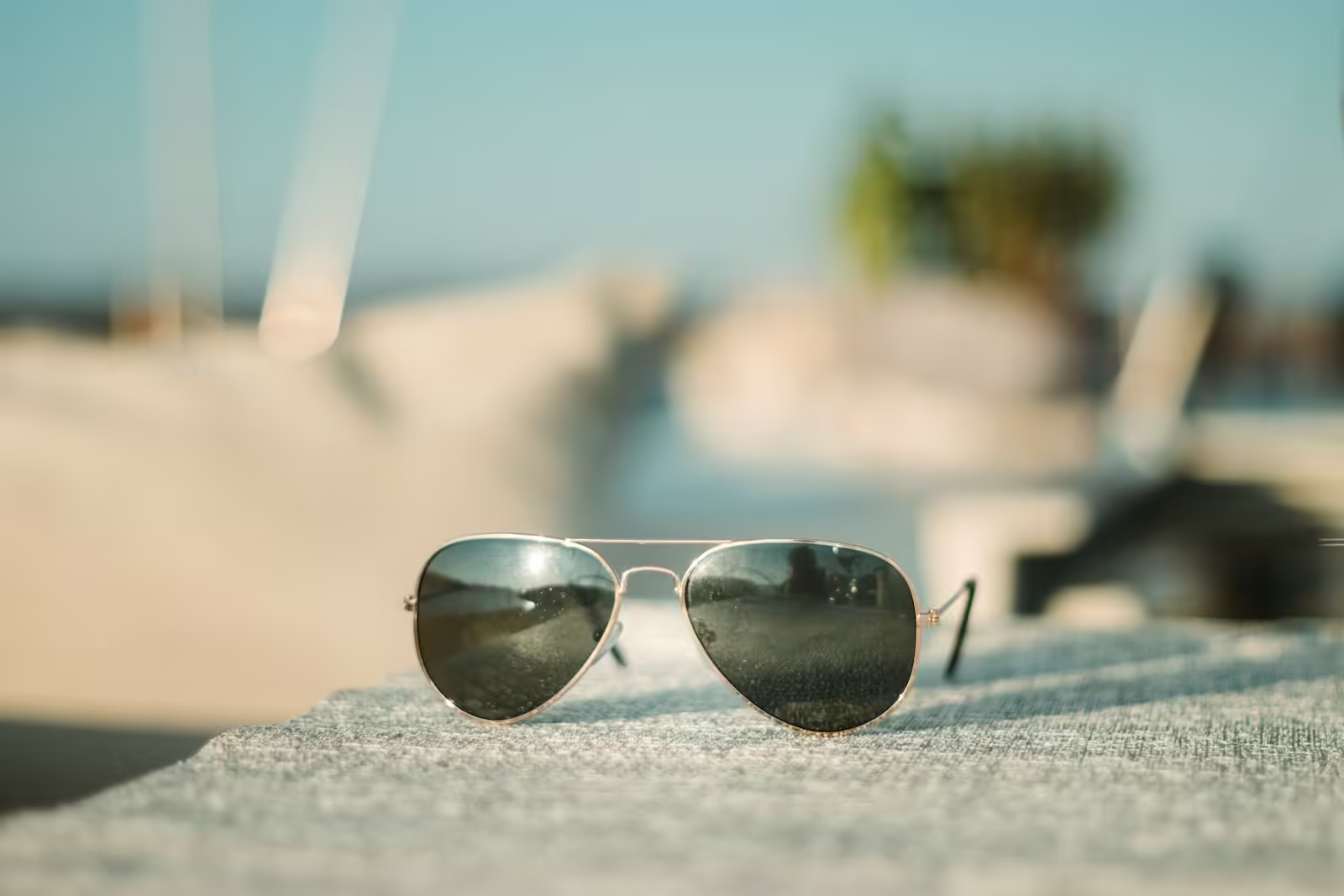
Table of Contents
Aviator sunglasses have seen countless iterations over the years but one detail remain consistent: dark green lenses. As you might guess, the color isn’t just cosmetic. But before we get into that, let’s go to the beginning of aviator sunglasses themselves.
Thanks to its practicality and historical importance, the aviator sunglasses are usually connected to the lens in green. This sunglasses was first created with the beginning of the pilot in the beginning of the 20th century. They offer specific benefits in high-high settings and reduce gloss when flying.
Beyond their usefulness, Green Hue is known and related to the aviator design, which adds to their unique appearance and appeal in the fashion world. Over time, celebrity, trend-setting and one time, fashionable glasses, looking for alternative options for fashionable glasses, have come to hug sunglasses as a fashion statement and have left its original work.
Basically, the green color of the aviator sunglasses is a feature of their durable appeal and cultural significance, though it works in a large amount of utilitarian tasks rooted in their aviation history significance in the world of fashion and eyewear.
The history of aviators
In the name of Bash and Lomba, an organization created the first version of Aviator Sunglasses you know in the 30s of the 30s. Earlier, aviators used goggles to save their eyes from various scenes with airlines flying at high altitude.
There was not only blind light, but the temperature was lower than zero. The purpose of the pilot was to protect both from tinted goggles. However, the temperature difference between the inside and the outer air inside the goggles was frequently caused by the lens fogging, making it difficult for the pilot to see.
If a pilot removes their goggles and enter into intense heat or freezing cold, the situation will be worse.
This was the situation of the pilot shorter audience, whose eyes were frozen a few minutes after he removed his glasses during an unprecedented flight at 33 33 feet. Fortunately, the jet landed safely.
A month later, his friend John Makaredi, who helped him out of the plane, will try to hit him on the same plane.
Seeing green
Although he found insufficient to block the light at such high altitude, the pilot goggles were successful, but Macredi’s trip was successful. He went to the bash and lumbar to get a better option.
Their formation was a thin, light metal frame that pushes tears with lenses, which push the eyes while looking down. The lens itself was probably the most important factor.
The lens had a deep green color instead of a neutral gray. The practical purpose of this particular color choice was because the blue light is reduced, which is a major problem for the aeronauts working beyond the cloud line. In addition, green lenses often increase contrast and sharpness when reducing gloss.
The Best Dress Pants for Mastering Business Casual
Sunglasses today
The green lenses commonly found in aviators are known by a specific name: G -15. For many years, industry was standard because of their visual intensity and limited light broadcast rates only 15% (thus 15%).
Although the G -15 is mostly used in sunglasses, the D Facto Green Lenses, but these lenses, such as G -31 and even G -50, have been repeated. The G -15 lenses have been created by other businesses, all of them have the same purpose.
Even if you are not a pilot and the bash and lumbar are no longer in the business, the technology is still useful in the ground and in the air.
READ | Alright, but is it really that bad to sunbathe? This Is The Practical Response

